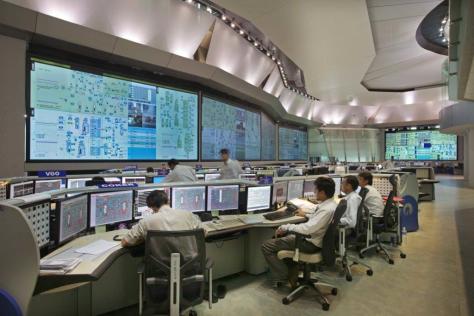Design thinking can make our lives better in small and big ways
(This article in #JargonJungle series was first published on bloncampus.com here )
In this era of start-ups, even established companies are rushing to bring new products to market to avoid being disrupted. There are companies that wish to capture value better before others do. All this calls not just for ideas, but also sustained efforts to actually develop and deliver newer and newer offerings, and solve problems in new ways. So, it is quite likely you will find yourself in situations like the ones mentioned below:
~~ You are in a team developing a medical product such a a Live Camera Monitor that shows images from tiny cameras (arthroscopy) inserted in a patient’s body. This product is used by surgeons and their attending staff, such as operating room nurses.
~~ You are in a team that is formed to solve drinking water shortage in a community in a remote village.
~~ You are working on a project to help artisans, such as textile weavers, develop products for urban markets.
~~ Your company is a start-up in the healthcare sector. Your mission is to dramatically improve healthcare for senior citizens. You aim to offer solutions to prevent injuries from falls and the need for difficult surgeries for senior citizens.
~~ Impressed with traditional cuisine in India because of its time-tested health benefits, youwant to develop recipes for food items such as pizzas and pastries, but with traditional Indian ingredients.
~~ Your company offers innovative enterprise solutions based on a sophisticated technology platform. You wish to communicate this to decision-makers who are not necessarily familiar with the technology.
~~ You eat, drink and sleep games. You wish to develop a computer or a mobile game yourself.
~~ You want to develop a solution for the continuous monitoring of a semiconductor chip fabrication plant. The plant has hundreds of motors, pumps, valves and other devices. Device failures are very costly and the expert manpower to diagnose and maintain them is rare, and expensive.
Products, services, experiences
How will you handle the kind of projects described above? How will the projects be conceived and planned? What kind of people would be needed? How will you collaborate? Many things need to come together for executing such a project. They are:
~~ Fresh thinking: You will agree that there is a need to break fresh ground. Even if you are familiar with the sector (for example, healthcare, gaming), you need to think afresh.
~~ Multi-disciplinary experts: You need people from various fields to come together with a common goal. The experts will also need to be ready for fresh-thinking.
~~ Goal: You need a statement that defines what you are going achieve at the end of the project. This can be a broad statement like “we will develop a suite of products to protect senior citizens from fall related injuries” or a more specific one, such as: “we will develop a hip protector for senior citizens”. Project brief detailing specifications, timelines, markets, budgets and the like, need to be developed from the get go.
~~ Project team and a leader: You need a core team of people who will work on the project from start to finish. You’ll need a leader who is not only a good thinker, but is also the one who encourages everyone to think and contribute. The leader must be a no-nonsense task master.
~~ Project philosophy: The project plan must be based on sound principles. It needs to address these questions. How will you define goals? How will you familiarise and empathise with users? How will you define problems? How will you ‘model’ various realities? How will you ideate solutions? How will you test the problem definitions as well as likely solutions? How will you assess and handle risks? How will you test-market and update the products? How will you communicate and collaborate? A project plan can be prepared based on answers to these questions.
Design Thinking
Design thinking, which involves the various iterations of empathising, generating ideas, prototyping, and testing, needs to occur at all stages of the above kind of projects. For example, a goal or problem definition can be improved using design thinking. One can do a few iterations involving multiple ways of defining the goal. A common mistake is to define goals influenced by what is obvious. One can miss huge opportunities for fresh thinking because of such mistakes. Design thinking can be applied to testing methods as well.
Design thinking need not be limited to creating a product or communication. Every team member needs to be reasonably comfortable with design thinking. Designers can help you with design thinking in addition to making their specialist contribution in research, problem definition, ideation, designing form or communications, prototyping and testing.
This need not be limited to big development projects like the ones mentioned above. It is useful, even in small projects, and need not be limited to designers.
What were they thinking?
Have you ever come across such situations? You notice that more than half the buttons on TV remote seem unnecessary. You have to squint and sprain your neck before you can read and adjust the cooling regulator in your fridge. Your WiFi router settings make you fret. You find it hard to recall how exactly you changed the line spacing in MS Word two days back or how it got changed.
You swipe your ATM card, enter PIN, choose language, punch some keys, choose savings or current account (why?), enter amount to withdraw and wait… only for it to tell you that you PIN was wrong, and forcing you to go through the steps all over again. Google Maps on your phone shows the road upside down no matter how much you shake it (that helpful compass needle isn’t there anymore after updates).
You fiddle with the door latch on your way out and it locks so securely that your host must step in. You try to turn the door knob and your fingers get hurt between the knob and the door frame. When coming down in an elevator, you are not sure of which button to press to get to the floor where you came in from because you now discover that there are buttons marked L, LL, P1, P2.
You can’t break the seal on a new LPG cylinder and, when you do, you are not sure if the new cylinder has been securely connected to your stove’s tube. You can’t make out which way the cylinder valve opens because the tiny arrows are embossed on black knob and they are just black lines on black.
The two pins of your phone charger don’t match with two holes in your electric socket. You are in a mobile application with your phone in one hand and an umbrella (or a sandwich) in the other, and you now need to touch those three dots diagonally across the screen from where you thumb is to unlock your phone or the application.
These are some minor irritants that have workarounds, and we can put up with them. But they do make you wonder, ‘What were they thinking?’ It’s obvious that what they were not thinking of was good design.
Design thinking is for everyone; it can make our lives better in small and big ways.
Article written by Hemant Karandikar. Visit his Linkedin Profile
“This article was published at https://leadtoregenerate.wordpress.com/2016/08/12/design-thinking/
For more such articles, visit the authors’ blog at https://leadtoregenerate.wordpress.com/“









